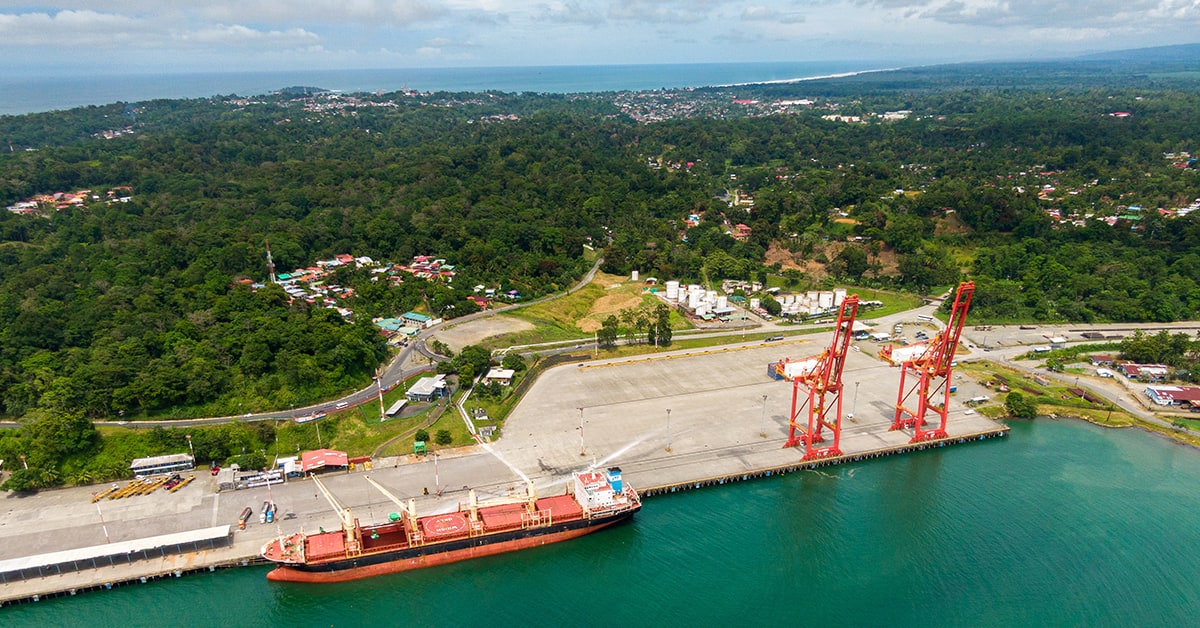Central America forms new, integrated markets to fuel the region’s bounce-back.

Central American institutions entered 2023 determined to learn from the difficult pandemic period—taking a reflective, more mature outlook for what many observers believe could be a challenging time, especially with inflation and interest rate rises. The pandemic also forced institutions to become more creative in the face of failed bond issuances.
Today, Central America finds itself in a strange position: needing to be more self-reliant and grow its own capital market—as seen in plans for regional debt markets—but also enjoying more-global prominence. Integration and sustainability are key to developing these markets, but political weakness may mean this has to come from the financial markets themselves.
“With four- or six-year terms, depending on the country, a president doesn’t have time to fix issues,” says Vidal Villalobos, economic adviser with the Prival financial group in Costa Rica and Panama. “There’s no way to do long-term things. They can only fight fires.” Furthermore, Central America’s regional political body—the Central American Parliament, or Parlacen—does not have regulatory authority. Its decrees are purely analytical and advisory. “If there’s no confidence, there’s no market,” Villalobos adds.
The Central American Bank for Economic Integration (Cabei) has ambitious plans for integration, which started in 2020. These include the Regional Debt Market (Mercado Regional de Deuda, or MRD). The MRD could go live in 2023 and has an estimated potential value of $120 billion, with room for expansion including investors from outside the region. A platform for the private sector involving equity is also possible. Optimizing a regional transactional platform, including custody and settlement systems, would also improve the risk perception of Central America.
For the first time, Cabei Executive President Dante Mossi sees the ministers of finance and the presidents of the central banks and stock exchanges from the Central American Integration System member countries (Belize, Costa Rica, the Dominican Republic, El Salvador, Guatemala, Honduras, Nicaragua and Panama) coming to agreement on a road map—this being the process of setting up the MRD.
Aided by El Salvador’s investment in its stock market, there is a single point of registry in the region. Cabei has visited El Salvador to share technical knowledge with its stock exchange and Central Securities Depository to understand how a regional registry works.
“Countries need to understand that for them to work in capital markets they need some discipline in terms of fiscal management, debt reporting, transparency and international standard frameworks for bonds,” Mossi says. “It’s a process. We like to start with the basics and aspire to the sophisticated part of markets.”
There is demand for the right vehicles. The Tocumen International Airport had been initially financed with a short-term bridge loan. Private investors then created a trust. In August 2022, Tocumen International Airport sold $1.85 billion in 20- and 40-year notes for a two-part refinancing of high-yield bonds into high-grade ones. It was 2022’s largest corporate issuance in Central America. The issue was oversubscribed within 45 minutes and reached a final demand of $7.4 billion.
Especially for companies moving into the region, a regional debt market would also provide new opportunities to find local finance for local subsidiaries. This is not always the case: The Moín container port in Puerto Limón, Costa Rica, was built and is managed on a 33-year concession by APM Terminals Moín, a subsidiary of Dutch company APM Terminals, which secured financing in Europe.
Central American stock exchanges have traditionally moved debt and debt securities—corporate or state bonds. In 2022, there was growth across the board. In some cases, this amounted to 2%-3%; but nominally this was $3.2 billion growth among the markets that make up the Capital Markets Association of the Americas (Amerca), according to its president, Valentín Arrieta Whisonant.
“There are private efforts to achieve integration models in the Caribbean and in Central and South America,” says Arrieta. “We all understand that individually we are too small to be seen in true magnitude by markets like the Asian, American or European ones. They are much more robust, with a lot more experience.”
In November 2022, Nicaragua was announced as the third member of Amerca to link up with El Salvador and Panama. This is expected to be ratified in March of this year; and by the end of 2023, investors could trade across the three countries in real time.
Not every regional stock exchange fared well in 2022. The Latin American Stock Exchange (Latinex), formerly the Panama Stock Exchange, closed 2022 with a trading volume of $6.13 billion for December, a decrease of $3.33 billion, or 35.2% year-on-year. Transaction volume was also down 11.4% year-on-year, at 10,111 total transactions for December 2022. Tocumen International Airport and Panama government issuances set record amounts in 2021, which were not repeated last year. Considering commercial transactions only, it would have shown 2% growth year-on-year.
Panama’s continued inclusion on the Financial Action Task Force gray list adds another question mark to integration. Panamanian authorities are confident the country will be removed in March 2023, but attempts to pass anti-terrorism and domain-extinction laws have been held up in the legislature.
Cabei leveraged the “January effect” to start 2023 with the largest bond issuance in its history, $1.25 billion. Designed with advice from investment banks in France and Germany, the bond was oversubscribed to the tune of $2.6 billion. One of Central America’s largest companies, Corporación Multi Inversiones (CMI), used part of the same framework to refinance itself in April 2021. In its centennial year, CMI closed a placement of $700 million in green bonds with an eight-year maturity at 6.25%.
Electric Hopes
Missing from this issuance was the means for CMI to deploy its own various businesses away from fossil fuels. Cabei’s electric-transportation agenda helped address the green framework of the bond issue. Electric mobility is a major part of regional stock exchanges, with the Costa Rican Electricity Institute and the Salvadoran LaGeo geothermal energy company partially financed through the stock market. Further issuances of green, blue, education, gender, ESG (environmental, social and governance) and volcano bonds are a possibility this year.
Latin American countries have also been more active than other regions in developing carbon credit markets. Honduras seeks to follow Gabon’s issuance of sovereign carbon credits, looking to convert reduced emissions from deforestation as measured by the UN climate change framework (REDD+ units) into sovereign carbon credits that can be sold on international markets.
Mossi’s message to both Central America and the Caribbean is the value of scale to investors. In the case of the Caribbean, integration is less an issue of how to do it than of following through with negotiations.
“The Caribbean is more fractured than Central America in some ways, more together in others: coordinated foreign policy; regional digital currencies; a common market in goods and services; and in theory, a common labor market,” says Chris Bennett, managing director of the Caribbean Council, a sustainability-minded trade and investment organization. “Jamaica is emerging as the regional trading center for capital. However, it remains patchy; 30 years after agreements were reached, not everything is implemented.”
Over the past two years, Cabei invested $7.6 billion in infrastructure and disbursed a further $2.8 billion, accounting for over half of regional finance. There are at least $1 billion in dam projects in the pipeline and larger projects could become a reality. A meeting this coming May of regional finance ministers could see a rise of investment in capital markets from $600 million to $1 billion into Cabei. This could make ambitious plans for train systems and rapid transit options a reality.
“Potentially, the regional market is worth up to $110 billion,” says Mossi. “Local issuances have the advantage of cost savings if you use your own market first. There are companies and investment opportunities here that fit risk profiles for any kind of investor, and we do not have a default history.”



